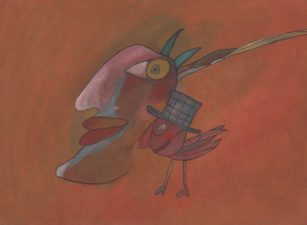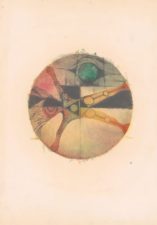NFT technology is part of a larger trend in technological innovation. Many of the things that technology aims to do are remove barriers and enable doing tasks more easily. Constant innovation means that society gains more convenience and comfort. So why is NFT art a part of this trend? Well, let’s have a look at what NFTs provide. Firstly, they are a way to tokenize files, which effectively turns them into assets. This allows artists to protect their work as they will be recognized as authors and creators. This brings us to the second thing that NFT provides, and that is the use of the blockchain. This technology, known as Distributed Ledger Technology (DLT), allows for keeping records of transactions that take place within the network.
This means that many of the conventional mechanisms that allow art to function as an industry could become irrelevant, and people can do things on their own. Easier and faster; a good way to define convenience. One of the things that the blockchain brings is a trustless system. So, knowing that an artwork is an original is more straightforward. There are still dangers of getting scammed but to a much lesser degree. ‘Minting’ an NFT work of art, which is the process of attaching the token to the file containing the file so that it goes into the blockchain, is no longer a centralized affair. Independent artists can create their website with a smart contract architecture behind it to allow collectors to buy that NFT. Artists with big-name recognition are usually pursued by auction houses to have their collections sold within their ecosystems.
All of this, with the added convenience of owning artwork within a mobile phone or a hardware wallet.
Convenience to collect
For collectors, NFTs have been the gateway to acquiring digital art. Indeed, art ownership has always been an issue with the previous iteration of the Internet known as Web 2.0. Tools for creating and editing content have been around for some time, but only until blockchain was invented have artists and creators been empowered to claim ownership of their art in the digital world. Before the invention of this technology, why would collectors pay to own a file? Collectors were as open to forgery and piracy as artists.
The fact that NFT art collectors can buy a scarce digital good is of great value to any prospective collector. Now, there is an easily verifiable way of knowing who is the actual owner of a given digital piece of art.
Let’s go over some of the aspects that enhance the convenience of collecting art through NFTs, in comparison to the traditional form of collecting.
Information: The internet is a vast source of information, and artists have to provide it to those that are looking for them to get more information or to simply be able to get to new audiences. Regardless of the situation, there should always be information available in a variety of forms. This can be thanks to a social media presence, a website, or secondary marketplaces.
Openness: You don’t need to be at a time and place to collect. All you need is an Internet connection to access the website of the secondary marketplace where you buy your NFTs. Of course, some exceptions apply. Like when an artist mints for a limited time or the artist sells out quickly. Other than that, it is very open.
Traceability: One of the cool features of NFTs is that you can see transaction history and see who has owned the artwork you are holding. Has it been owned by someone famous or a credible art curator? You can prove that and add value to your collection.
Global markets: Geography is no longer a barrier to acquiring NFTs. This is very convenient, as collectors can tap talent from all around the world.
Convenience to sell
A new market has emerged for artists, one where they have a bigger say. First, with the power of social media, artists now can advertise themselves to the world. And even more interesting is that they can set up their website where they can mint their NFT collection. And even though secondary marketplaces like Magic Eden have removed the artist royalties from the artists’ control, other marketplaces still allow this.
Because artists are more empowered, some of the bigger names can demand better conditions when traditional auction houses want them to host their NFT collections within their platforms.
Are there downsides to convenience?
Even though NFT technology has allowed new forms of art to develop —like generative art and dynamic NFTs— one has to stay alert to some vices that could appear. First off, the appearance of ‘fast art’, which happens in industries such as fashion. Such art would be for consumption and not in pursuit of aesthetic beauty or the product of an intellectual process.
Also, a global market —which can be considered an advantage of convenience— could generate a homogenized culture where artistic outputs are consistently similar to each other.
When it comes to making a jump into Web3, NFTs and the metaverse, the Czech art gallery SOPRG has a solid operation. They can transform a physical painting into an NFT thanks to top-tier scanning technology. They can also help you navigate the legal aspects of this emerging medium. In short, a streamlined, easy experience.






